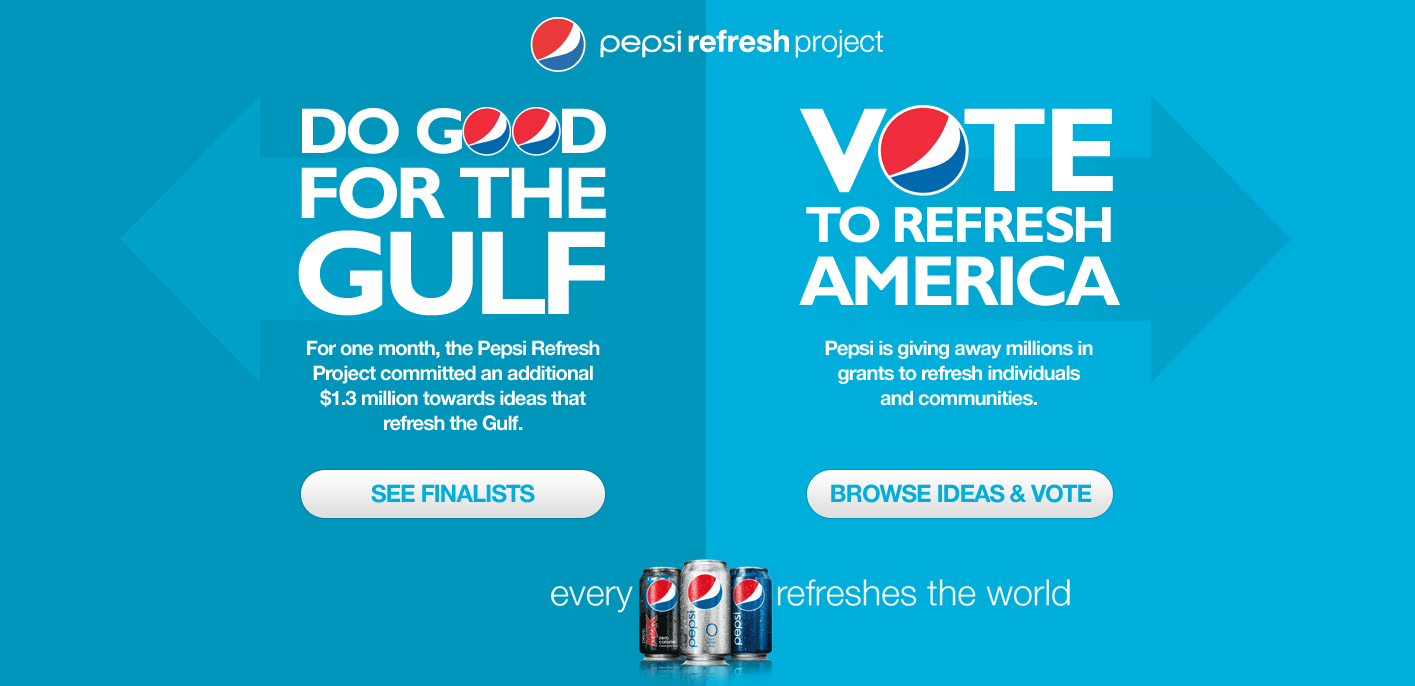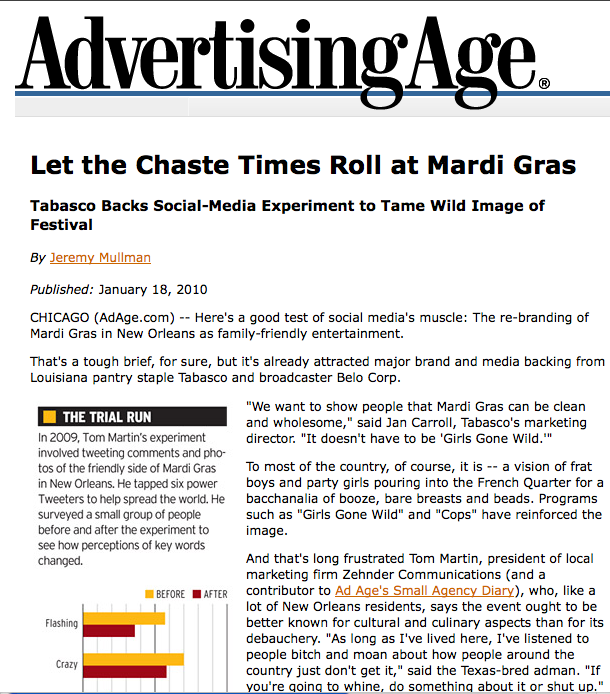 Is your social media program fully integrated with your traditional marketing program, or are you just bolting on “Follow me on Twitter/Facebook” to your ads and fooling yourself?
Is your social media program fully integrated with your traditional marketing program, or are you just bolting on “Follow me on Twitter/Facebook” to your ads and fooling yourself?
The Integration Question
If you're running a truly integrated program, congrats. You're among the elite. Like the Marines, you're part of the few, the proud, the enlightened.
But for everyone else, the question that constantly floats around boardrooms, ballrooms and conference panels is “How do I integrate all of this new social media with my traditional advertising and public relations campaigns?” Yes, social media is growing up, and in 2010, marketers don't just want to know how to use Twitter and Facebook, marketers want to know how to integrate Twitter and Facebook into their advertising, direct marketing and public relations campaigns.
I think the problem is that most people are asking the wrong question. When you ask someone to tell you how to do something, you're asking for a process that you can replicate. But that is just one process. Sure, it worked for them (and maybe you) this time, but is it truly replicable? Will it work tomorrow or the day after that?
Consumers are a lot like bacteria. Just as bacteria can evolve and eventually grow resistant to antibiotics, so too can consumers grow resistant to current forms of marketing, including social media marketing.
So instead of asking how to integrate all of it, maybe a better question would be to ask “how to think” about integrating social media, digital media, old media and the blending of all of it. We need to be asking for a framework, not a solution.
If someone gives you a framework for thinking, they've empowered you to think for yourself. If they give you a process to replicate, well, they've just made you reliant on them to give you a new process when the old one finally fails to be effective (because those pesky consumers, like bacteria, will grow immune).
A Social Media Framework
 So what does a framework for looking at the integration of social media and traditional media look like? Let's start with the base.
So what does a framework for looking at the integration of social media and traditional media look like? Let's start with the base.
The Achilles heel of advertising is truth. A 2007 Nielsen Report showed only 55% of Americans trust advertising.
That same report found that overall, consumers trust other consumers above all else. 78% of respondents said they trusted – either completely or somewhat – the recommendation of other consumers. This is social media's strength.
However, social media's Achilles heel is scale. Because exposure comes one person at a time, except for the rare meme, it can take weeks, months, even years to scale an effective social media program.
Thus, a good starting point for a framework for considering how you should integrate social media with traditional media might be to think in terms of yin and yang. Social media and advertising are not mutually exclusive. In fact, it's probably best if all marketers move away from replacement thinking, and focus instead on complementary thinking.

Discover Proven Marketing Strategies and Tips
Want to go even deeper with your marketing? Check out the Social Media Marketing Podcast! Publishing weekly since 2012, the Social Media Marketing Podcast helps you navigate the constantly changing marketing jungle, with expert interviews from marketing pros.
But don’t let the name fool you. This show is about a lot more than just social media marketing. With over 600 episodes and millions of downloads each year, this show has been a trusted source for marketers for well over a decade.
Under the complementary model, we look for ways that social media can leverage advertising and vice versa in order create a more impactful and effective integrated campaign. Let advertising offset social media's scale issue and allow social media to bring believability back to an advertising campaign.

A number of marketers are already experimenting with this approach. From announcements like Pepsi's decision to forgo Super Bowl commercials in favor of its Refresh Project to smaller efforts like Tabasco's decision to support a social media experiment to try to change the Mardi Gras brand from crazy/tawdry to more family-friendly. These marketers are using advertising or public relations efforts to drive consumers to online destinations where conversations are built to deliver long-term brand results.
Get World-Class Marketing Training — All Year Long!
Are you facing doubt, uncertainty, or overwhelm? The Social Media Marketing Society can help.
Each month, you’ll receive training from trusted marketing experts, covering everything from AI to organic social marketing. When you join, you’ll also get immediate access to:
- A library of 100+ marketing trainings
- A community of like-minded marketers
- Monthly online community meetups
- Relevant news and trends updates

The Social Media/Advertising Integrated Planning Framework
I noted earlier that we need a framework for planning truly integrated campaigns. Over the years, I've developed a simple 6-question integrated marketing development framework that helps me get started. Today, I'm sharing it with you as a starting point for the development of your planning framework.
#1: What is the goal?
You'd think this is an obvious one… but you'd be surprised how often people skip this step. Another tip: start with the business goal, not the communications goal.
#2: Who is the audience?
Give yourself some depth here. Go beyond demographics and ask yourself what do they look like, sound like and whom do they hang out with when they're using your product?
#3: Where is the audience?
This an obvious question, especially when you consider social networking platforms. But go beyond the obvious to the not-so-obvious, as in where they are in their lives. It will add a lot of depth to your analysis.
#4: How can I connect with my audience?
Don't just define this in terms of channels. Ask yourself – from a creative, offer or conversation perspective – how can you best connect with your audience?
#5: How do I extend the conversation?
This is where that yin and yang thing really comes into play. Once you've made that initial contact and gained permission to have an ongoing conversation, what do you plan to do next?
#6: How can I get my audience to introduce me to others?
When was the last time you saw this section in a marketing plan overview? Don't let that be a reason to leave it out of your plan. If you're going to do something truly integrated, you have to think beyond the conversation to the recommendation. Recommendation is where the real money lies, so think about how you can get your customer to give you one.
The Value of Integrated Thinking
Which do you think would be more effective today – simply pushing the same message in all channels or customizing the role of each channel (and the message) to fully leverage the power and limit the weakness of each channel? And if the answer is obvious to you, why do you think more companies and brands aren't doing it? Leave your comments in the box below.
Attention Agency Owners, Brand Marketers, and Consultants

Introducing the Marketing Agency Show–our newest podcast designed to explore the struggles of agency marketers.
Join show host and agency owner, Brooke Sellas, as she interviews agency marketers and digs deep into their biggest challenges. Explore topics like navigating rough economic times, leveraging AI, service diversification, client acquisition, and much more.
Just pull up your favorite podcast app, search for Marketing Agency Show and start listening. Or click the button below for more information.

